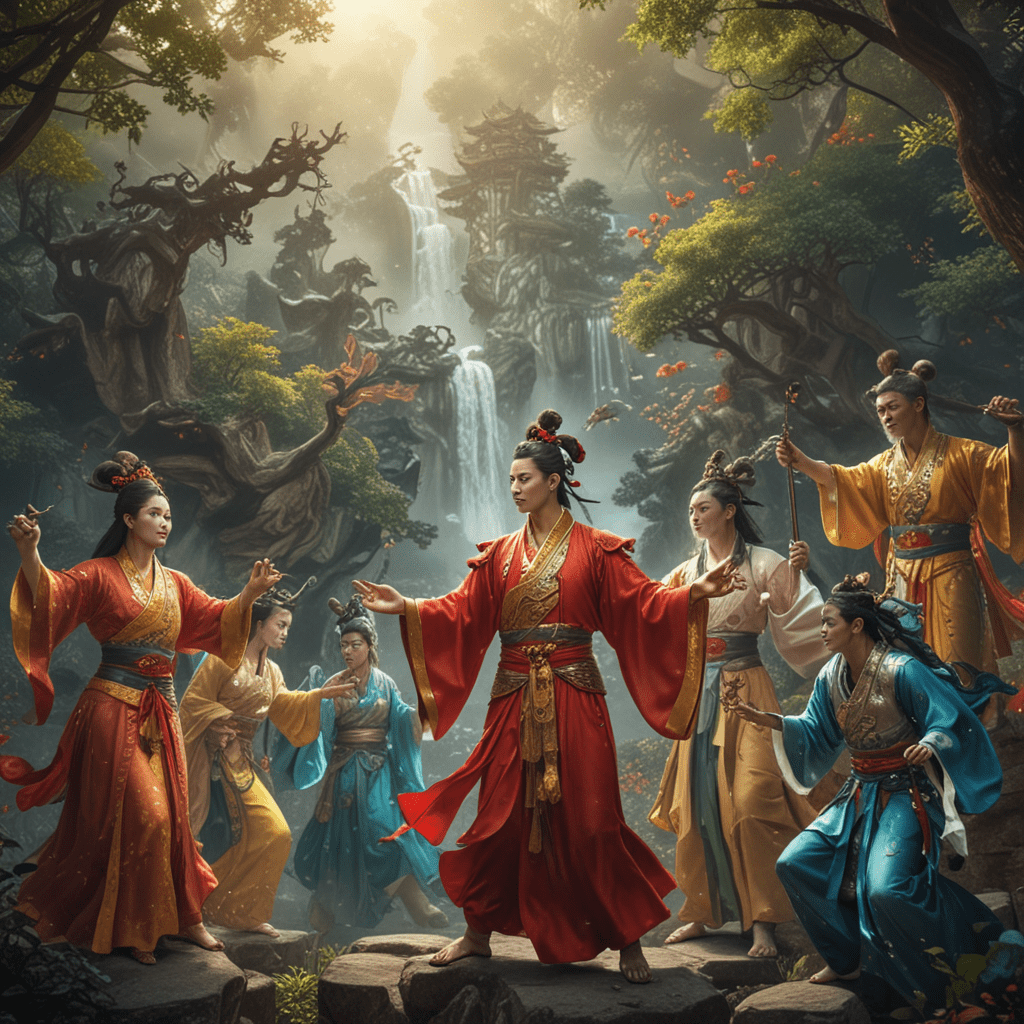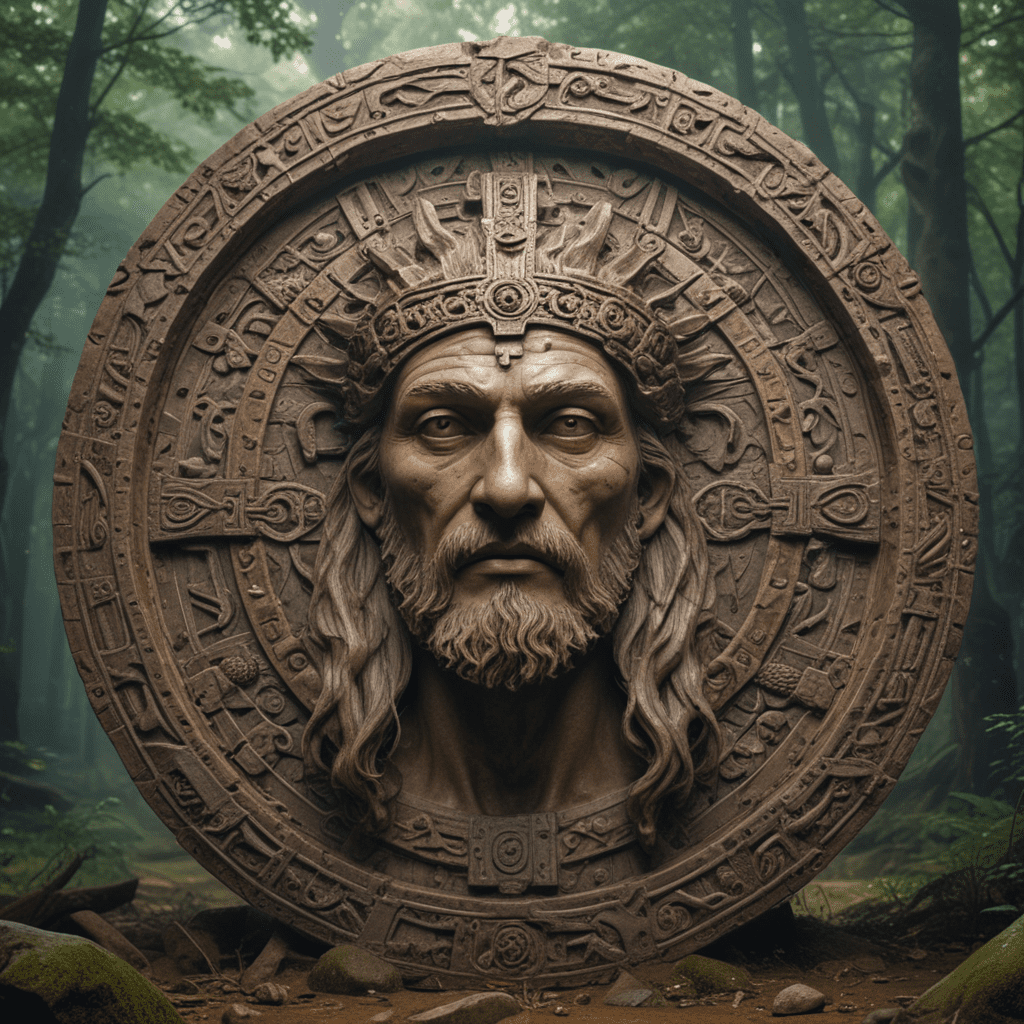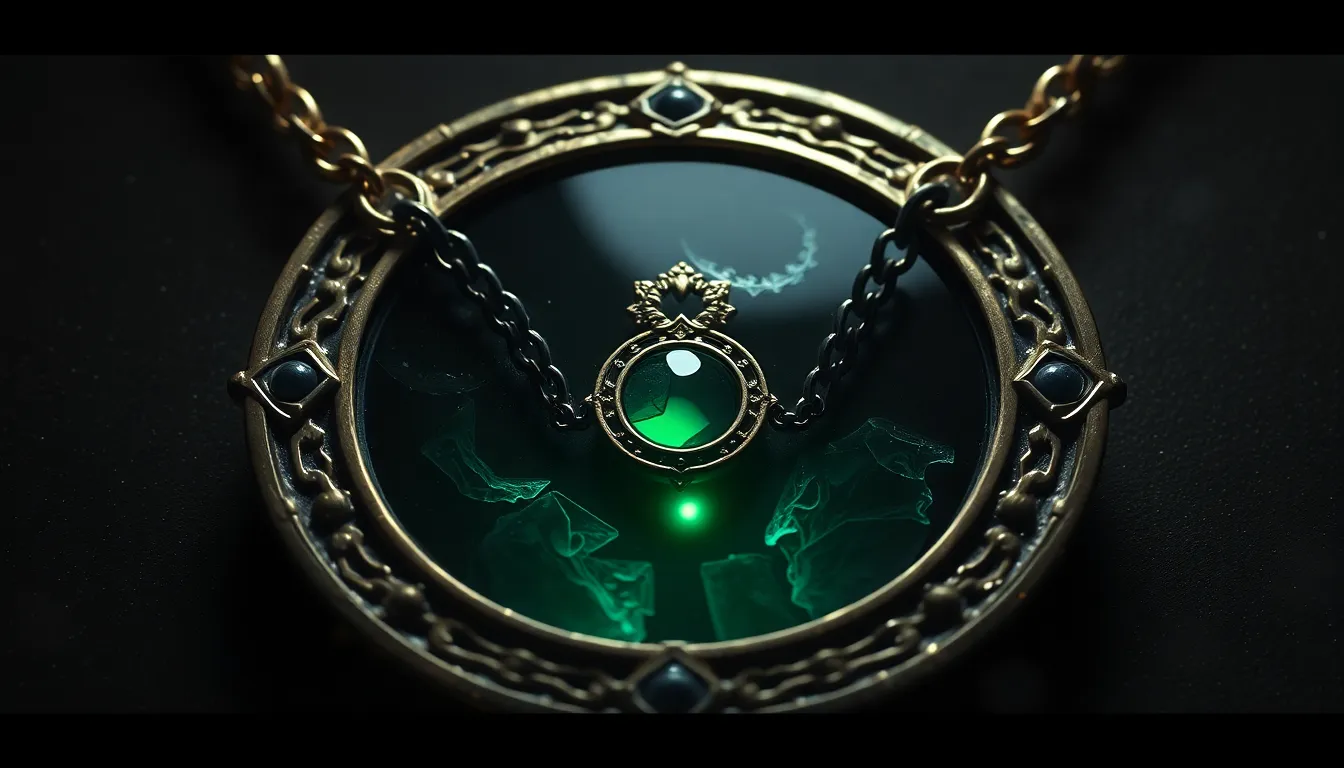Introduction
The Eight Immortals are renowned mythological figures in Chinese folklore, revered for their extraordinary abilities and symbolic significance. Their tale is an intricate tapestry of history, legend, and cultural beliefs that has captivated imaginations for centuries.
Origin and Genesis of the Myth
The origins of the Eight Immortals myth are shrouded in the mists of time. However, the earliest references to these divine beings can be traced back to the Tang dynasty (618-907 CE). During this period, Taoist alchemists sought immortality through various practices, including meditation, herbal remedies, and the pursuit of spiritual enlightenment. It is believed that the Eight Immortals emerged as personifications of these Taoist ideals.
The Eight Immortals: Background and Personalities
The Eight Immortals represent a diverse group of individuals from various backgrounds and eras. Each immortal possesses distinct characteristics and abilities that symbolize different aspects of human nature and the path to spiritual transcendence:
- Lü Dongbin: A legendary figure from the Tang dynasty, known for his wisdom, swordsmanship, and ability to transform into different forms.
- Zhongli Quan: An enigmatic Taoist immortal associated with wealth and prosperity. He is often depicted with a magical fan.
- Zhang Guolao: A hermit who is said to have possessed the power to summon donkeys and predict the future.
- Tie Guai Li: A lame beggar who carries a gourd containing magical medicine.
- Han Xiangzi: A flute-playing scholar who represents the pursuit of knowledge and spiritual enlightenment.
- He Xiangu: The only female immortal, renowned for her beauty and mastery of Taoist magic.
- Lan Caihe: A young boy who symbolizes purity and innocence.
- Cao Guojiu: A military general who achieved immortality through martial prowess and unwavering loyalty.
The Symbolism of the Immortals
The Eight Immortals embody various human qualities and virtues. Lü Dongbin represents wisdom and transformation, while Zhongli Quan signifies wealth and prosperity. Zhang Guolao symbolizes wisdom and foresight, and Tie Guai Li represents compassion and perseverance. Han Xiangzi embodies knowledge and harmony, and He Xiangu represents purity and grace. Lan Caihe signifies innocence and joy, and Cao Guojiu symbolizes loyalty and courage.
The Immortals' Special Abilities and Powers
Each Immortal possesses unique abilities and powers derived from their spiritual attainment. Lü Dongbin wields a magical sword and can transform into different beings. Zhongli Quan has the power to revive the dead and grant wealth. Zhang Guolao can summon donkeys and predict fortunes. Tie Guai Li carries a gourd filled with medicinal herbs that can heal the sick. Han Xiangzi's flute music can bring peace and harmony. He Xiangu can fly on clouds and control water. Lan Caihe can communicate with plants and animals, and Cao Guojiu possesses superhuman strength and martial prowess.
The Immortals in Literature, Art, and Pop Culture
The Eight Immortals have been celebrated in numerous works of literature, art, and popular culture throughout Chinese history. They appear in paintings, sculptures, operas, and novels, where their stories and symbolism have inspired and entertained generations of readers and viewers.
The Eight Immortals as Cultural Icons
The Eight Immortals are deeply embedded in Chinese culture. They symbolize longevity, good fortune, and spiritual attainment. Images of the Immortals are commonly displayed in temples, homes, and businesses as a symbol of blessing and protection.
The Myth's Impact on Chinese Society
The myth of the Eight Immortals has had a profound impact on Chinese society. It has promoted values such as wisdom, compassion, perseverance, and spiritual enlightenment. The Immortals serve as role models and inspire people to strive for personal growth and self-transcendence.
Variations and Adaptations of the Myth
Over the centuries, the myth of the Eight Immortals has undergone numerous variations and adaptations. Different regions and cultures have adopted and reinterpreted the story, creating new legends and variations. In some versions, the number of Immortals varies, and their names and characteristics may differ.
Conclusion
The myth of the Eight Immortals is a fascinating and enduring tale that reflects the profound spiritual and cultural beliefs of the Chinese people. Through their symbolism, abilities, and legacy, the Immortals continue to embody the essence of Chinese mythology and inspire generations with their message of wisdom, compassion, and the pursuit of spiritual fulfillment.
FAQ
Q: What are the most famous stories involving the Eight Immortals?
A: Some popular stories include the Immortals' journey to the Western Paradise, their battle with the Demon King, and their gift of peaches to the Queen Mother of the West.
Q: Where can I find images or statues of the Eight Immortals?
A: Images and statues of the Immortals can be found in temples, museums, and art galleries throughout China and other East Asian countries.
Q: Are there any modern adaptations or interpretations of the Eight Immortals myth?
A: Yes, the Eight Immortals have been featured in contemporary films, television shows, and video games, where their stories and symbolism have been reimagined for modern audiences.



